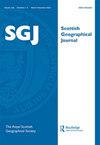地下水自流井分配:建议使用地理信息系统和双重分析层次过程
IF 2
4区 社会学
Q2 GEOGRAPHY
引用次数: 0
摘要
本文章由计算机程序翻译,如有差异,请以英文原文为准。
Groundwater artesian wells allocation: proposing the use of a geographical information system and a dual analytical hierarchical process
ABSTRACT This study proposed a structured approach that incorporates a geographical information system (GIS) with an analytical hierarchal process (AHP) for selecting the best location for drilling new artesian wells, considering water quantity and salinity, aquifer depth, distance to the area of use, the wells interfering, and land characteristics. ArcGIS software was used to manipulate the raw data to generate a thematic layer for each selection criterion. The proposed approach consists of three phases: the first phase applies regular AHP to find the best site in the study area; and the second phase utilizes the raster overlay feature of ArcGIS to find the best zone in the study area to dig a new artesian well. In the third and last phase, AHP compares the first phase best site with a set of random sites within the best-identified zone in the second phase. A case study was used to exemplify the proposed approach. It results in a sensitivity of about 15% of the original criteria weights. The study concludes that the outcomes of this approach are more trustworthy and robust, as compared to relying solely on the AHP method (phase 1) or ArcGIS (phase 2) method.
求助全文
通过发布文献求助,成功后即可免费获取论文全文。
去求助
来源期刊

Scottish Geographical Journal
GEOGRAPHY-
CiteScore
1.80
自引率
20.00%
发文量
19
期刊介绍:
The Scottish Geographical Journal is the learned publication of the Royal Scottish Geographical Society and is a continuation of the Scottish Geographical Magazine, first published in 1885. The Journal was relaunched in its present format in 1999. The Journal is international in outlook and publishes scholarly articles of original research from any branch of geography and on any part of the world, while at the same time maintaining a distinctive interest in and concern with issues relating to Scotland. “The Scottish Geographical Journal mixes physical and human geography in a way that no other international journal does. It deploys a long heritage of geography in Scotland to address the most pressing issues of today."
 求助内容:
求助内容: 应助结果提醒方式:
应助结果提醒方式:


